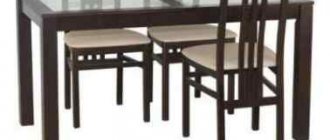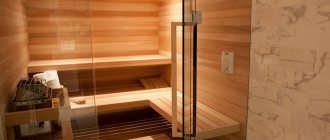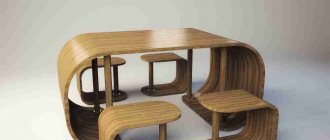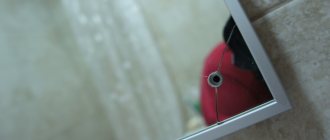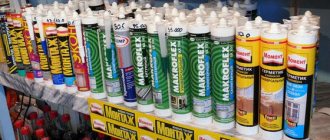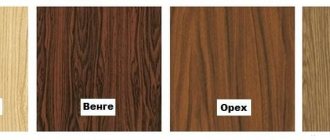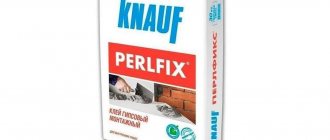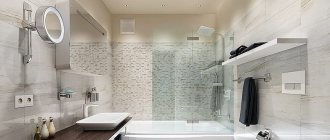Furniture is often produced at home. This allows you to significantly save your budget. After cutting the laminated chipboard, unprocessed ends remain; they not only spoil the appearance, but also lead to injury or the possibility of carrying a pile. To give the tabletop a finished look, you need to glue the edge to the end part. The adhesive edge will protect the coating from moisture and extend the service life.
Features of choosing glue for PVC edges
Today, the use of hot melt adhesives is common. This is a very high-quality material, so special equipment is provided for its use. This is inconvenient if you need to glue the edge to the tabletop at home one time.
The use of PVC glue is common. It perfectly attaches the paper base to different materials. The only negative is that it does not tolerate moisture, so it is not used for kitchen tables.
It is optimal to use universal adhesives. They provide reliable fastening and are not afraid of moisture. It takes up to four hours for the layer to dry, then the tabletop is put into operation. Such compositions are available, most importantly, they are safe for the body. An example is Kleiberit 501. This is a polyurethane, one-component adhesive. It is heat and water resistant and can withstand group D4 loads. Hardening occurs when exposed to moisture from the air.
Types of furniture edges
Laminated chipboard is one of the most common materials in furniture production. The furniture edge is designed to mask the cuts that occur after cutting the required parts. Various edges are used to make decorative strips. They are made from different materials. Their properties and prices are also different. Before gluing the edge to the tabletop, let's look at the main types of materials.
Paper with melamine
Melamine-impregnated paper edging is the cheapest option. To make it, thick paper is used, impregnated with melamine and coated with varnish. For ease of edging, an adhesive coating is applied to the back of the film. Working with the material is extremely simple: you need to heat it up and press it well against the furniture end.
Important! Paper edging is not only the cheapest, but also the most short-lived type of finish.
The most common paper tape thicknesses are 0.2 and 0.4 mm. There is no point in using a thicker edge, and the price will increase significantly.
Important! Paper tapes bend well and do not break, but their mechanical strength is extremely low. For this reason, the paper edge is used on the back of a shelf or tabletop - where there is no heavy load.
PVC
Durable and practical polyvinyl chloride (PVC) has also found application in furniture production. A ribbon is formed from a polymer mass painted in one color or another. The front surface can be smooth or textured (imitation of wood fibers). There are so many color options that you can choose the right one without much difficulty. At the same time, the price of PVC is more than affordable.
It is very easy to glue PVC, which is why home craftsmen often use it. You can achieve good results with simple tools. The advantages of PVC tape include:
- High strength.
- Moisture resistance.
- Chemical neutrality to household chemicals.
The thickness of the furniture edge is 0.4-4.0 mm, with a width of 19-54 mm. There are tapes with or without glue applied.
Important! Polyvinyl chloride also has a significant disadvantage: it does not have a very wide range of operating temperatures (-5 - +45 degrees). Therefore, in winter, furniture should not be left outside for a long time (for example, when moving). Care must also be taken when heating the material before gluing so that it does not melt.
ABS (ABC) plastic
This is an environmentally friendly material that does not contain any harmful impurities. It is durable and practical, resistant to significant temperature changes. It has one drawback - its relatively high cost.
Important! ABC tape can be matte, semi-matte or glossy. There is furniture tape that imitates different types of wood.
Veneer
This is the thinnest piece of wood, processed and shaped like a ribbon. It is used for finishing the edges of veneer products. The material is not cheap and quite difficult to use. The sticker of this material requires certain skills, so it is advisable to turn to the experts.
Acrylic
The back strip of the tape has a pattern on it, and a transparent acrylic layer creates a three-dimensional effect. Therefore, it is also known as 3D. This option is suitable for furniture with an original design.
Profiles
In addition to edges, a special T-shaped or U-shaped profile is used for finishing furniture. For T-shaped profiles, a groove is formed in the edge. The profile itself is hammered into the groove using a mallet. There are 14 and 16 mm profiles made of plastic or aluminum. Installation of a profile with a U-shaped cross-section is carried out using special glue.
Important! The disadvantage of this type of finish is that they are of little use for curved surfaces.
How to glue an edge (tape) to a tabletop with your own hands: step-by-step instructions
For the work to be successful, you must adhere to the following instructions:
- The table top is installed with the end facing up, making it more convenient to work.
The cut of the tabletop should be smooth, not sprinkled. The edge strip will not hide unevenness; it adheres well only to an even cut.
- The end is cleaned of dirt and dust deposits.
- The edge is applied for measurement, and the required part is cut to size.
- A strip is installed on the end part of the tabletop with the adhesive layer down.
- The iron warms up on the program for ironing synthetic materials.
- The paper is placed on the tape, ironed for three minutes, while the adhesive layer warms up under temperature, melts and sticks the strip.
- The edge is adjusted to size and trimmed.
If an ABS strip is used, it is difficult to cut and burrs may remain on the edges. They are carefully removed with fine-grained sandpaper.
If a hairdryer is used for heating, then for strong adhesion the strip must be ironed with a roller.
We recommend videos on the topic:
Varieties of edges
From the variety of edges you have to choose the most suitable one.
Melamine
Made in the form of a self-adhesive tape made of decorative paper, which is impregnated with melamine resins. Typically used for interior decoration of furniture. This is a budget option for edges for chipboard, not characterized by high quality. It has a short service life, is susceptible to moisture and often falls off on its own over time.
The undoubted positive property of the melamine edge is the ease of gluing it; this can be done at home yourself, using a regular iron. The second advantage is the absence of a side, a curb protruding above the edged surface, which sometimes irritates when it gets under your hands when working with the keyboard, and also interferes with sweeping away small debris, for example, crumbs from the dining table in the office.
It is a flexible tape with curved edges that form a side. This edging is made of PVC (polyvinyl chloride). Types of edging differ in width and profile: in cross-section, the edge resembles either the letter “t” (T-shaped) or the letter “p” (U-shaped).
The latter is easier to attach, but less reliable; experts do not recommend using it on surfaces that are often subject to friction: on the seats of stools or benches, on the front edge of a computer desk, which is constantly in contact with the forearms.
PVC edging increases the durability and wear resistance of furniture parts, and reliably protects edges and corners from damage.
The edging is similar to the previous type of edging tape, but is more environmentally friendly. Made from chlorine-free plastic. It has found successful application in furniture production due to its heat resistance and impact resistance.
How to glue an edge without adhesive
If the edge strip does not contain an adhesive layer, then the gluing steps are as follows:
- The tape is cut 2 cm longer than the desired size.
- The glue is applied to the inside of the border (according to the instructions, time is allowed to soak the raw material).
- If necessary, coat the end of the tabletop with glue.
- The strip is applied from the end part, leveled, and rolled with a roller.
- After the glue has dried, the edges are smoothed out, and any irregularities are smoothed out with sandpaper.
Useful video on the topic:
PVC tapes for edges
See also:
Closers for kitchen cabinets: what are they, how to choose
I think it’s not difficult to guess that PVC edges are the highest quality and most reliable for self-processing countertops.
They can come with or without glue.
First, practice on some scraps. The technology is more complex and therefore requires skills.
But this method can also be mastered.
The technology for applying PVC tape looks something like this:
- As in the previous case, cut the tape with a length margin of 2 cm;
- Using a hair dryer, heat the side where the glue is applied;
- If you use an iron, then you need to heat the front part of the material;
- In the absence of glue, the adhesive liquid is carefully applied over the entire surface;
- The tape is applied to the edge of the tabletop and rolled with a roller;
- Wait until the glue is completely dry;
- All excess that protrudes beyond the edge is removed with a sharp knife;
- The edges are processed with sandpaper on a block.
At this point the work can be considered completed.
As you can see, nothing incredibly complicated and inaccessible to a home craftsman.
Useful tips
It is possible to edge the tabletop yourself, but you must follow the instructions and take into account the recommendations. Helpful Tips:
- The edging material is sold with or without an adhesive base; this determines what tools and materials are prepared, and the progress of the work itself.
- If an iron is used as a heating device, the strip is covered with paper or cloth to prevent the top of the strip from melting.
- Leveling and pressing is carried out until the material cools completely;
- The end side of the tabletop must be cleaned of dust deposits and dirt, otherwise the glue will not provide the necessary adhesion.
- The glue is applied to the two surfaces to be glued, and the required time is waited for impregnation.
- If there are chips on the edge, sanding is done, but do not make any effort so as not to scratch the surface.
Glue the edge to the tabletop with glue
If the melamine tape does not have an adhesive base, you can use glue. This method is also suitable for edges made of PVC. For this we need:
- universal glue;
- a piece of thick, dry cloth for pressing and wiping the surface. In order to press the edge more tightly, you can wrap a small block in fabric and press the tape with it.
We apply a thick layer of glue to the surface of the edge and to the surface of the surface being treated so that after pressing, the remaining glue does not come out.
We press the two surfaces together carefully, but with force. If the edge is long, it is better to ask someone to help hold and smooth the other end.
Gluing the edge with an iron
We maintain the amount of time required according to the instructions, while simultaneously smoothing it with a bar wrapped in fabric. We make sure that the materials do not peel off anywhere.
Once you are confident that everything is securely connected, you can let go. If there are any glue residues, carefully remove them with sandpaper or a small file. After all the steps, you can polish the edge with a piece of leather.
Now you are convinced that you can glue furniture edges yourself at home, with minimal investment of time and money. All materials are available at home or in any hardware store or hardware department of a supermarket. If you carefully and accurately follow all the instructions, the edge will protect your furniture from damage and delight you with its appearance!
Making furniture with your own hands brings considerable savings in money. Basically, laminated chipboard, a material glued together from sawdust, is used for this purpose.
The main task of furniture edges is lining the end surfaces of laminated chipboards.
After cutting, its edges have an unattractive appearance and require further processing.
The tabletop is the most vulnerable element of furniture, and its edge must be given special attention.
Tools
If you decide to glue the edge yourself, check that you have the tools. Prepare before starting work:
- Iron, which is necessary for gluing with melamine edge;
Furniture edges can be glued at home using a regular iron.
A hair dryer is the most convenient method of heating the edge.
It will become a convenient device for pressing the edge tightly.
The processed ends are smoothed with it.
You will need scissors to cut the desired length of the edge.
It cuts off the excess edge hanging from the edges of the part.
Use glue if your material does not have an adhesive base.
With a solvent you can easily remove traces of glue.
It is convenient to remove excess glue with a rag soaked in solvent.
To fix the PVC edge, you can use a clamp and a wooden block. If possible, use a hand router to finish the edging.
The router is expensive and it is not profitable to buy it for one-time pasting.
Prepare your workspace, taking into account the space for turning the tabletop. And, most importantly, buy the appropriate melamine tape or PVC edge.
Choose a ribbon that matches the color of the countertop.
